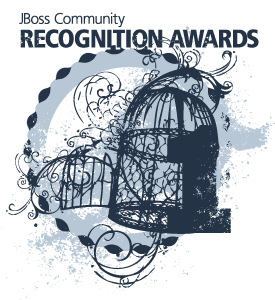The past week hasn't seen any major event (which is to be expected, given that we are amid vacations seaso). That doesn't mean that there's nothing to report - in fact we have quite a number of interesting news.
The future of RichFaces: stability over innovation
Brian Leathem, the RichFaces project lead, has shared an outlook on the future of the project, considering its place in a world where client-side frameworks and single-page applications have started to become the dominating trend, at the expense of server-side rendering. JSF remains an integral part of the Java EE specification, and will continue to have a well-determined role in certain classes of projects, and the RichFaces project will continue to evolve to meet the demands on the new JSF specifications, without necessarily focusing on innovation, as it did so far.
A little about Fuse Service Works
Kenneth Peeples has published a couple of articles about Red Hat JBoss Fuse Service Works, the first outlining the main components and services of the product. The second, more technical, focuses on using Docker with BPM-Suite and FSW.
Infinispan Security: Authorization and Auditing
Tristan Tarrant provides a few updates on the Infinitispan authorization model, and the main changes as of 7.0.0.Alpha5, as well as new features such as auditing.
Keep learning about jBPM
One great thing about jBPM is the large number of learning resources - and we're not talking only about articles and tutorials. One of the latest available options is Mariano De Maio's new book, "jBPM 6 Developer Guide", to be published soon by Packt Publishing. Or, you can attend the session at BPM Openhouse 2014, a virtual event to take place between September 22-26. And if you want to know why, Eric Schabell is giving you all the good reasons.
Also, on the BPM front, an interesting example developed by Eric and Maciej Swiderski showcases a document-based BPM process, using jBPM and a CMIS-compatible content management system (Apache Chemistry in this case).
Help improving the JBoss and WildFly UX!
Heiko Braun's blog post calls for all WildFly and JBoss users to participate in a survey, with the goal of improving the UX of the web administration interface. As good administration tools are a critical component of a successful project and product, please make sure you get involved!
JBoss Fuse Tooling: get started and set it up
Lars Heinemann has published a series on articles on how to get JBoss Tooling and set it up, including particular instructions for Kepler and Luna.
Logging with Docker
Marek Goldmann provides an extensive overview on setting up logging for Docker containers, with a practical example using JBoss WildFly. The crux of the matter is a practical introduction to data containers, the preferred option for logging in production.
Arun's tech tips
Arun Gupta continues providing Java EE 7 tips with part 6 and part 7 of the series dedicated to enhancing JBoss Forge with Batch job support. This week: template support, upgrades, and test fixes.
Social integration with Kia Uberfire
The Rich Client Platform Uberfire has a new extension: Kia Uberfire Social Activities, that allows enhancing workbench-style applications with social-related features. Eder Ignatowicz's blog provides an in-depth view of the feature, showing how your application can react to events in your social networks by leveraging Uberfire's event driven model.
New releases:
- On behalf of the ActiveMQ team: ActiveMQ-CPP 3.8.3
- On behalf of the RichFaces team: RichFaces 4.5.0.Alpha3
- On behalf of the Teiid team: Teiid Web Console 1.2
- On behalf of the JBoss Forge team: JBoss Forge 2.7.2.Final
- On the product side: Red Hat JBoss Data Grid 6.3











